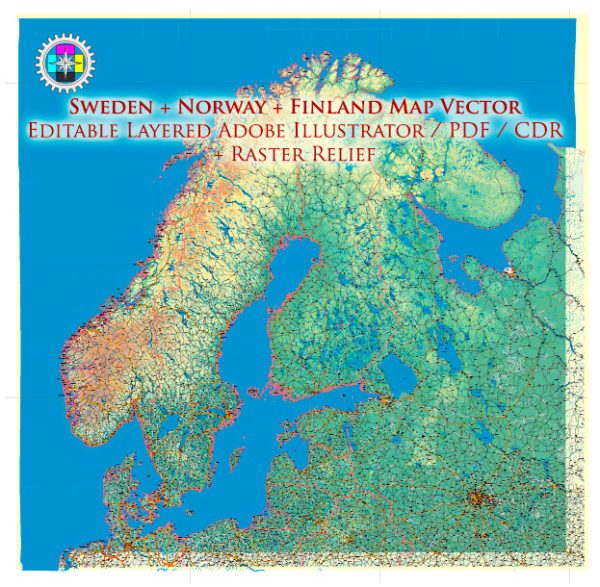A general overview of the maritime and air transportation in Sweden, Norway, and Finland.
Sweden:
Maritime Transportation: Sweden has a well-developed maritime transportation system due to its extensive coastline and numerous ports. The major ports include Gothenburg, Stockholm, and Malmö. The country is known for its efficient and reliable shipping industry, facilitating both domestic and international trade.
Air Transportation: Sweden has several international airports, with Stockholm Arlanda Airport being the largest and busiest. Other significant airports include Gothenburg Landvetter Airport and Malmo Airport. The aviation sector is characterized by modern infrastructure and a high level of connectivity.
Norway:
Maritime Transportation: Norway, with its long coastline and numerous fjords, relies heavily on maritime transportation. Major ports like Oslo, Bergen, and Stavanger play key roles in handling both domestic and international cargo. Norway is also known for its robust shipping industry, with a significant focus on oil and gas transportation.
Air Transportation: Norway has a well-developed aviation sector, with airports such as Oslo Gardermoen, Bergen Flesland, and Stavanger Sola serving as major hubs. The country is well-connected domestically, and its airports contribute to facilitating international travel.
Finland:
Maritime Transportation: Finland’s strategic location with a coastline along the Baltic Sea enhances its importance in maritime transportation. Ports such as Helsinki, Turku, and Kotka are vital for handling goods and passengers. Finland also has a strong presence in the shipping industry, particularly for transporting goods to and from other Baltic Sea countries.
Air Transportation: Finland has several international airports, including Helsinki-Vantaa Airport, which is the largest and busiest. Other notable airports include Oulu Airport and Tampere-Pirkkala Airport. The country’s aviation sector is well-developed, contributing to its connectivity with both European and global destinations.
Common Features:
- Efficiency and Connectivity: All three countries prioritize efficiency in their transportation systems, ensuring smooth connectivity for both goods and passengers.
- Environmental Considerations: The Nordic countries are increasingly focusing on sustainable and environmentally friendly transportation solutions, with investments in green technologies and practices.
- Winter Challenges: Given their northern locations, these countries face challenges related to harsh winter conditions, affecting both maritime and air transportation. Icebreaking services and snow management are crucial for maintaining operational efficiency.
- International Collaboration: Given their proximity and shared interests, Sweden, Norway, and Finland often collaborate on regional transportation initiatives to improve connectivity and efficiency.
For the latest and more specific information, it’s advisable to check with official transportation authorities and sources in each country.


 Author: Kirill Shrayber, Ph.D.
Author: Kirill Shrayber, Ph.D.